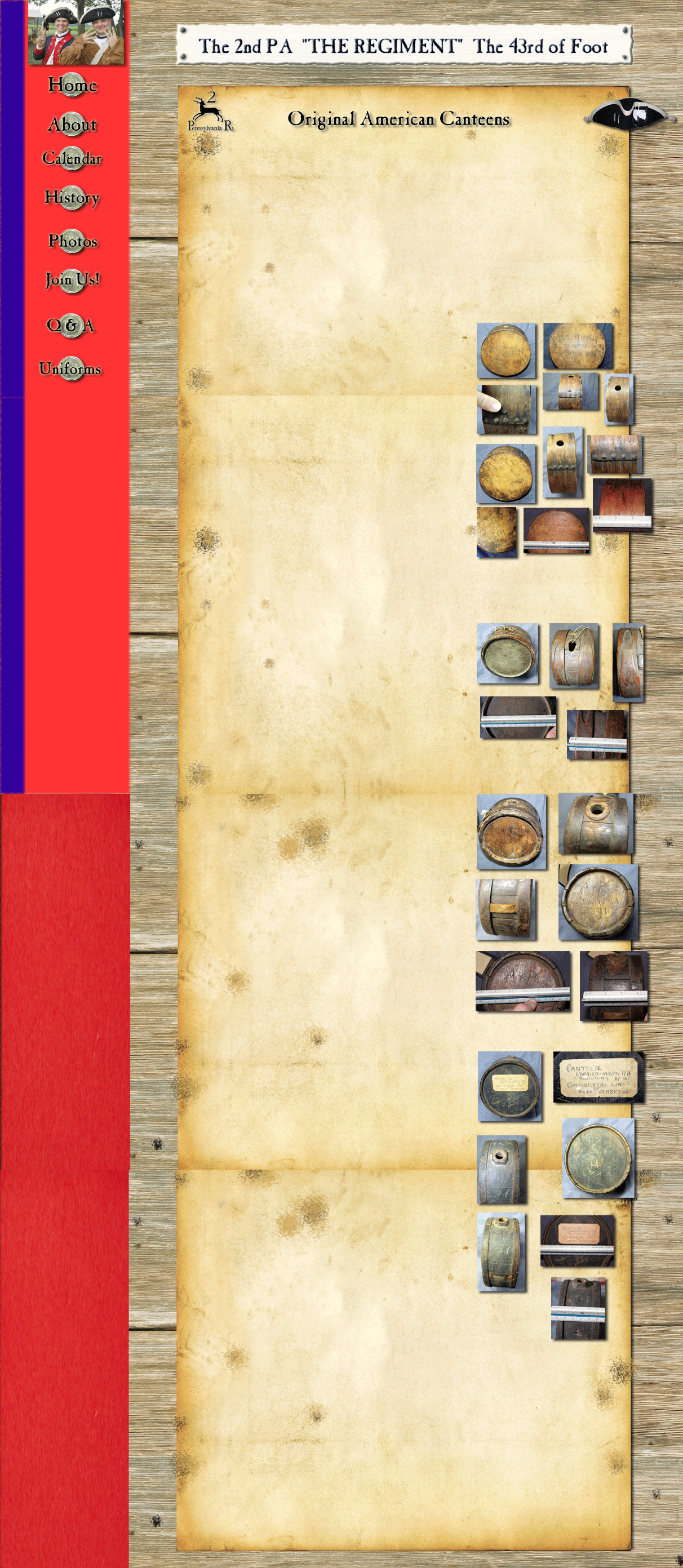While the Continental Forces certainly preferred lightweight tin water vessels like those carried by the British soldier, stocks of that metal dried up even before the Revolution was a year old as the British blockade of American seaports tightened. By the spring of 1776, with the summer campaign ahead, the availability of canteens of any kind was essentially gone and Congress turned to the production of wooden canteens to issue its troops. Of course wood was abundant in America and the only metal the colonies could produce, iron, was far too heavy to use for this purpose. Two styles emerged: the “drum” and “cheesebox.” Even with rushed production efforts, the army remained urgently in need of canteens through that summer. It was not until well into 1777 that production had finally reached a point where the Continental Army was able to fulfill the needs of its rank and file and actually begin building up a stockpile. However, even with an improving system of supply, the availability of canteens varied throughout the war.
In this section we present a look at a number of original canteens actually carried in the War of Independence that would be typical of those carried by the Second Pennsylvania Regiment, graciously made available to us from the superb collection of historian/artist Don Troiani, an emeritus member of our organization.
THE "CHEESE BOX" CANTEEN
Made by "cedar coopers" (also called "white coopers") with experience in
making compact articles for domestic use, the "cheese box" canteen was
simply a strip of cedar formed around circular sides of the same wood. Small
iron rivets were peened through the overlapping rim and even smaller nails
or wooden pegs fastened it to the sides. It appears that the "cheese box"
style was locally produced predominately in the New York and New England
area.
Example 1: This is one of the earliest identified "cheese box" canteens,
carried by Joseph Ames, a member of the 2nd Continental Artillery Regiment
which was raised in the Upper Hudson River region of New York. Along with
his name, the canteen is etched with Ames' enlistment date: "December the 10
day 1776 AD." The canteen still retains its small iron wire strap loops
which held a simple cord shoulder strap. It measures 7" by 2 3/4".
Example 2: Another canteen very much like example 1.
It bears the dates
1777 and 1814, hinting that it might have seen service in the War of 1812 as
well.
THE "DRUM" CANTEEN
More popular than the "cheese box" was the "drum" canteen, constructed like
barrels by experienced "bottle makers" with their distinctive rims of staves
bound together by wooden hoops (later examples would use thin iron
bands).The Continental Army ordered thousands of them. They were rugged and
serviceable and held about a quart of liquid.
Example 1: Here is one of the Rev. War's earliest documented wood "drum"
canteens. Stout oak hoops hold the staves in place, distinguishing this as a
"first pattern" example. Along with the typical raised bung for drinking, it
also has a small air vent hole added to make pouring easier. The specimen
measures 6 1/4" by 3 5/8". It was used by Pvt. James Adams of Canterbury,
Ct. who served in Major Obadiah Johnson's Company of the 3rd Ct. Regiment of
Foot, commanded by Rufus Putnam. Adams served with the unit in 1775 at
Cambridge and possibly Bunker Hill.
Example 2: This "second pattern" (held together by iron bands) "drum"
canteen measures 6" by 3 1/2" and has a strip of thick leather at each side
through which passed a wide shoulder strap. It is carved with the owner's
initials "A P" along with "Sar[a]toga 1777." It belonged to Corporal Asa
Plank who participated in the Battles of Saratoga and served from August 23
to November 2, 1777 in Captain Stone's Company, Colonel Latimer's Regiment,
Poor's Brigade of Arnold's Division.
Example 3: Another example of a "second pattern" canteen. This shows traces
of green, blue or dark aqua paint and there is an indication it might have
had a smaller vent hole added near the bung. It measures 7" by 2 3/4". The
old museum label states it was carried by New Jersey troops during the war.
There is much information contained in Mike O'Donnell's landmark, heavily illustrated book "U.S. Army & Militia canteens, 1775-1910" and members interested in this subject are encouraged to obtain a copy. We have referred to it extensively for our purposes in this section. Particularly enlightening is his description of how the word "canteen" itself was used:
"It is important to understand that the meaning of the word 'canteen' evolved during the war as new styles became popular and old patterns fell by the wayside. Were it possible to ask a typical military man or civilian to describe a canteen in 1775, he would have almost certainly replied that it was a soldier's drinking vessel made of tin. When tin became scarce in 1776, the procurement agents of states like Maryland, Connecticut and Massachusetts began requesting 'canteens or wooden bottles.' These were two distinctly different items and no one at the time would have mistaken a canteen for the little wooden kegs constructed of hoops and staves that had been known as 'wooden bottles' for a couple centuries. But with the widespread distribution of the wood drum design in 1776-77, the meaning of 'canteen' began to shift to those circular wooden containers with flat faces."
